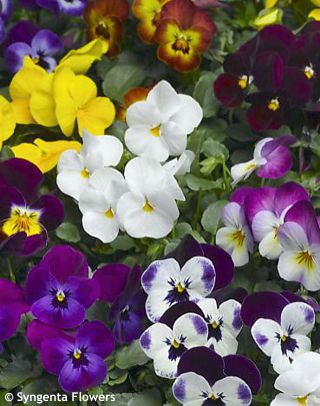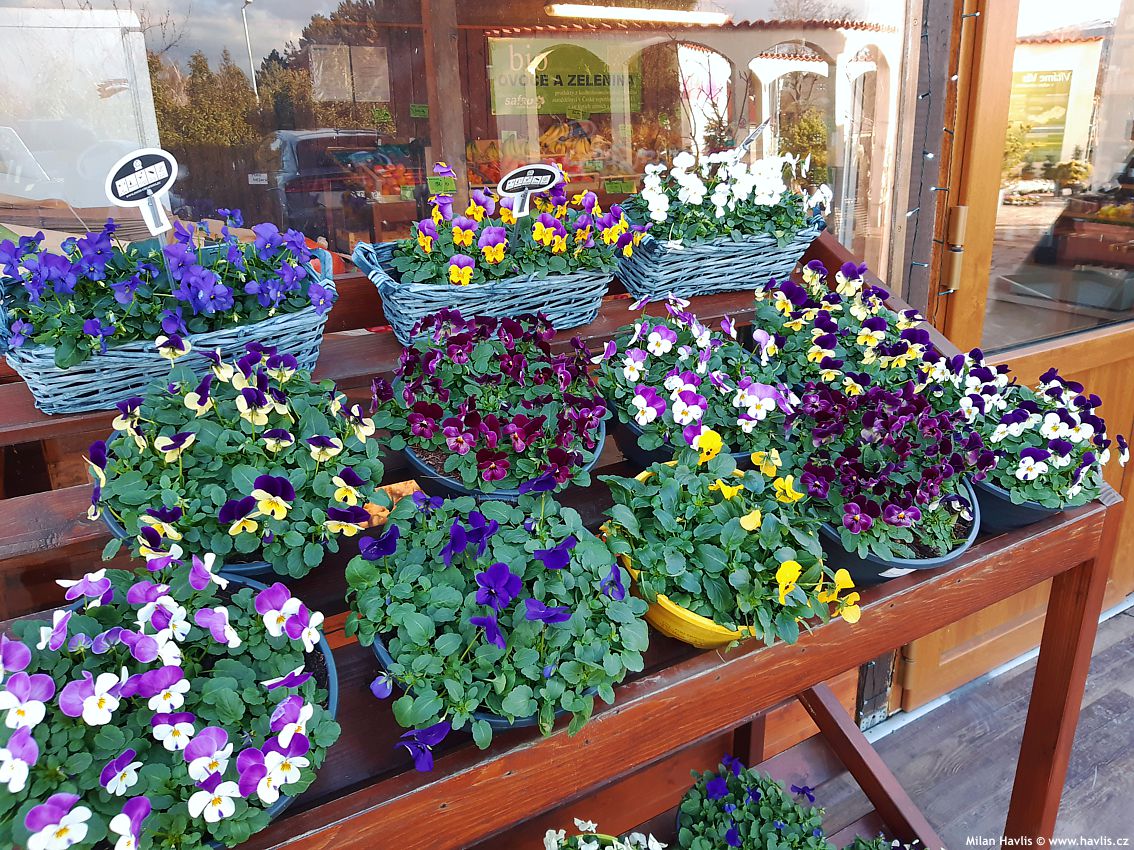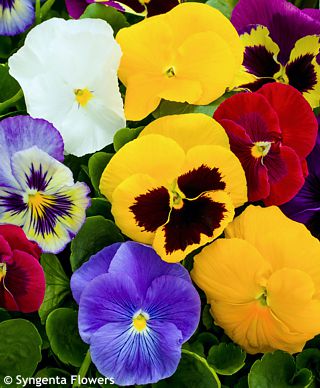Viola cornuta horned violet
size/type
low or groundcovering,low perennial
usual height
0,1-0,2m
usual width
0,2-0,4m
leaves
evergreen broadleaf
colour of leaves
flowers
showy
blooming time
November-July
location
full to partial sun
soil type
any (acidic to alkaline)
soil moisture requirements
evenly moist but well-drained
USDA zone (lowest)
7 (down to -23°C)
winter protection
for zone 5+6

for zone 7

categorized
Description of the plant:
Those of you who remember Keeping Up Appearances must know that there were four sisters, all of them had flower names: Hyacinth (the bossy one), Daisy (the warm-hearted romantic), Rose (the bimbo past her prime), and Violet. Violet is very important because even though you don’t see much of her she is mentioned in every episode because Hyacinth never misses an opportunity to boast with her richer sister – you know – Violet has a Mercedes, swimming pool, sauna, and a room for a pony … This BBC TV series from 1990’s is a must for those who love subtle sense of English humour and excellent acting. And based on that we know that violet is important and can be a pretty rich item!Horned violet is a Spanish species of viola. It is an evergreen perennial for sunny or half-shaded locations with ample moisture – violet is NOT a rocky plant. It produces masses of 5-petalled, small, slightly fragrant flowers which usually come out from May until July. But if sown in a controlled environment in early summer, they are ready for autumn transplants, and already bear flowers which will last until the first truly cold days of winter as they can take down to -5°C. Then the plant goes dormant and re-emerges in spring. Flowers are edible and make a stunning display in a fruit salat or as a soup decoration.
Violets are easy to grow. If you grow them in a pot treat them almost like annuals – feed them regularly every two weeks, water them every week or so but make sure the pots are free draining. In a bed they will be happy with moderately fertile, loose soil of any pH, and will be grateful for some watering during dry spells and on the hottest days of summer. Plants may be attacked by slugs and snails. Fully hardy to about -25°C (USDA zone 6) but often self-seed.
Last update 17-01-2020
QUICK PRICE OVERVIEW
CURRENTLY SOLD OUT
WANT TO TRY A SIMILAR PLANT?

















